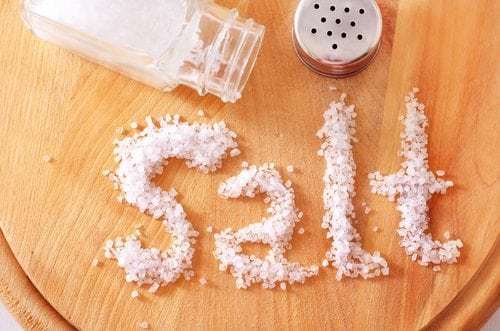Imagine a world without salt and pepper. What a bland, flavorless world that would be! Although sodium is an essential nutrient, too much salt can put your health at risk. According to the American Heart Association, most Americans ingest about 3,400 milligrams of sodium each day, which is more than twice the recommended amount, 1,500 milligrams (source). To reduce your blood pressure and decrease your risk of stroke, heart failure, osteoporosis, kidney disease, and more, use the simple tips below to learn how to lower your sodium intake.
How to Lower Your Sodium Intake
Start reading labels and comparing products.
Before you purchase a packaged food item, look at the nutrition label to find the amount of sodium per serving, which will be listed in milligrams (mg). You might be surprised how much sodium some products have. For example, these items are known to be startlingly salty:
- Frozen meals
- Soups
- Canned vegetables
- Deli meats
- Pasta sauce
- Roasted nuts
- Cereals
Why not make a simple salad dressing at home so that you know exactly what’s going into it? In addition, look for items labeled “low sodium,” “reduced sodium,” or “no salt added.”
Avoid processed foods.
Most of the excess sodium we consume doesn’t come from excessive shakes of the salt shaker; it comes from processed foods and restaurant meals. So an easy way to limit your salt intake is to stick to home-cooked meals. Many assisted living facilities provide delicious restaurant-style meals these days, which makes it easy to dine well while eating healthy meals. When you do purchase fast food or eat out, check the restaurant’s website to see if they list nutritional information.
Limit your condiment use.
Although you’re free to add as much tomato, onion, and lettuce to your hamburger as you want, ease up on the ketchup and mustard. Although using condiments sparingly is fine, a slathering of ketchup adds up quickly at about 190mg per tablespoon. Soy sauce, pickle relish, steak sauce, teriyaki sauce, and capers are often filled with salt as well. Look for low-sodium versions of these condiments, or try replacing them with alternatives that aren’t salty: salsa, lemon juice, vinegar, herbs, spices, etc.
Always taste your food before adding salt.
Do you always grab the salt and pepper shakers before taking a bite of your food? Break this bad habit! Taste your food first, and only add salt when it is truly necessary. Typically, fast food and restaurant meals are already packed with salt – why add more? Don’t reach for the salt shaker just because it’s there.
Eat a low-sodium diet for 6-8 weeks.
Studies show that when people limit their sodium intake for several weeks, they begin to prefer foods with less salt (source). The more salt you eat, the more accustomed to it you become. So if you’re afraid that your future will be filled with bland meals, set a strict goal: two months with a reduced sodium diet. When you allow yourself to eat more sodium again, you may find that the foods you once enjoyed taste too salty.
_____
Because we grow more sensitive to salt with age, learning how to lower your sodium intake is especially important for people in their sunset years. Use the tips above to minimize the amount of salt in your diet, taking it step by step to prevent the frustration that comes with going cold turkey. Good luck!
Are you looking for an assisted living community in Tennessee? If so, be sure to check out Hearthside Senior Living Place in Bartlett, Tennessee. We would be happy to schedule a tour for you so that you can explore the community, speak with the Community Director, meet some of the residents, and ask any questions you might have. For more information, please call 901-854-6590. We look forward to meeting you!

